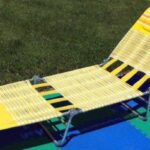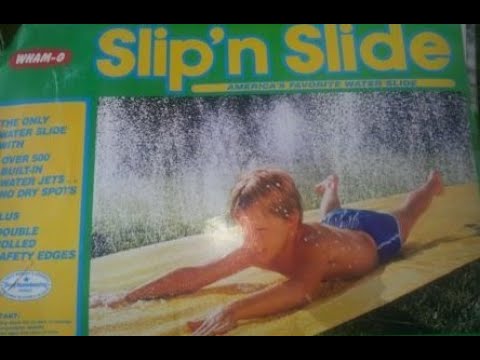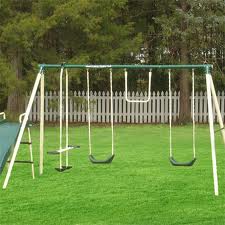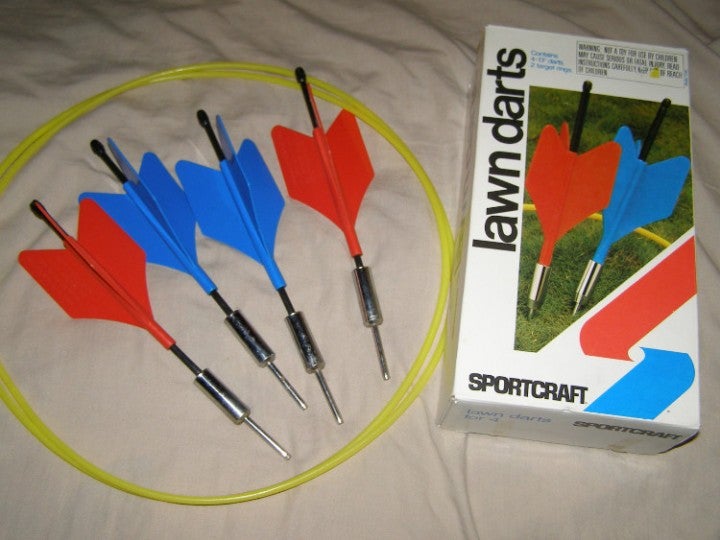 For anyone who grew up in the 1980s, memories of family barbecues, Fourth of July fireworks, weekend camping trips, or backyard birthday parties often come with one common, indestructible artifact: the plastic folding lawn chair. With their aluminum frames and woven polypropylene straps in faded colors like avocado green, mustard yellow, sky blue, or sun-bleached white, these chairs weren’t just pieces of outdoor furniture—they were part of the fabric of suburban life. They squeaked, they wobbled, they left waffle marks on the backs of your legs—but they were everywhere. In an era before sleek patio sets and collapsible zero-gravity loungers, these humble lawn chairs were the MVPs of outdoor seating.
For anyone who grew up in the 1980s, memories of family barbecues, Fourth of July fireworks, weekend camping trips, or backyard birthday parties often come with one common, indestructible artifact: the plastic folding lawn chair. With their aluminum frames and woven polypropylene straps in faded colors like avocado green, mustard yellow, sky blue, or sun-bleached white, these chairs weren’t just pieces of outdoor furniture—they were part of the fabric of suburban life. They squeaked, they wobbled, they left waffle marks on the backs of your legs—but they were everywhere. In an era before sleek patio sets and collapsible zero-gravity loungers, these humble lawn chairs were the MVPs of outdoor seating.
The classic 1980s lawn chair was as functional as it was iconic. Built with a lightweight tubular aluminum frame and threaded with crisscrossed plastic webbing, they were portable, stackable, and rugged enough to withstand everything from summer thunderstorms to rowdy uncles at family reunions. They folded flat, making them easy to toss into the trunk of a station wagon or wedge into a packed garage. And they came out every summer like clockwork—unfolded, popped open, and placed on the grass like thrones for dads, moms, and any adult who wanted to sit down and supervise while the kids ran wild.
There was something oddly satisfying about unfolding one. You’d grab it by the arms, swing it open with a clack and a snap, and test the seat with a cautious bounce. If it held, you were good to go. And if you happened to get one with loose webbing, you’d brace yourself for that slow, inevitable sag into a U-shaped hammock of discomfort. But even then, you sat. Because that’s what you did in the ’80s—you sat outside. You watched parades. You picnicked. You parked on the sidelines of little league games, on the beach, by the lake, at the campground, or in your own front yard. And that lawn chair came with you, no questions asked.
The visual aesthetic of these chairs was pure 1980s suburban design. Their woven plastic straps came in all sorts of bright color combinations—red and orange, green and white, turquoise and yellow—and over time, they’d fade unevenly in the sun, giving them a kind of battle-worn charm. Some had armrests made of hard plastic that got hot enough to burn your skin if left in the sun too long. Others had metal loops on the back that jingled when you moved. They didn’t recline, they didn’t swivel, and they certainly didn’t offer lumbar support. But they got the job done.
And while they were technically “lawn chairs,” their usage went far beyond lawns. They showed up on driveways, at tailgates, at neighborhood fireworks shows, at church picnics, and in makeshift bleachers at school events. They were hauled out for block parties and poolside gossip sessions. They were pulled up to fire pits and fish fries. Kids used them as forts. Adults used them as a way to claim a little bit of rest amid the chaos. They were egalitarian and unpretentious. You didn’t need a deck or a patio to own one. All you needed was a patch of grass or a patch of sky.
Sometimes, the chairs broke. A strap would snap, leaving you with a pinched thigh or a surprise collapse. The aluminum frame might bend if someone heavier than average sat in it. And no one who lived through the ’80s escaped the slow, creeping terror of sitting down in one and realizing—too late—that a couple of those woven straps had rotted out from sun damage, and now you were stuck, bum through the seat, legs flailing, while your family pointed and laughed. But even then, you’d tape it up. You’d replace a strap with a belt or a bungee cord. These chairs weren’t disposable. They were survivors.
They also became strange works of art in their own right. Some came with patterns—checkered, striped, floral—and others were one solid neon hue. You might have your “good” chairs for when guests came over, and then the “janky” ones for the kids or the neighbors who never returned anything they borrowed. The lawn chair was, in a sense, the great equalizer of outdoor life. Everyone had them. Everyone used them. Everyone had a story about one collapsing under their uncle at a family reunion or being duct-taped back together for “just one more summer.”
For the kids of the ’80s, those chairs weren’t just for sitting. They became part of the imaginative landscape. Two lawn chairs and a beach towel made a tent. Flip one upside down and it was a spaceship. Lay a few on their sides and you had an obstacle course or a jail for your G.I. Joes. Their portability meant they followed you wherever you went—and when you got tired of running through the sprinkler or digging in the sandbox, you collapsed into one, legs dripping wet, Kool-Aid mustache on your face, and sat there until mom said it was time to come inside.
Eventually, of course, these chairs gave way to newer designs. Outdoor furniture became more elegant, more weatherproof, more ergonomic. You could buy a $300 Adirondack chair or a folding recliner with twelve settings and a cup holder. But somehow, none of them captured the same spirit. The plastic-and-aluminum lawn chair of the 1980s was more than just a place to park yourself—it was a symbol of an era. Of a time when summers were long, neighborhoods felt like communities, and being outside meant something more than staring at your phone while pretending to relax.
Today, those vintage chairs are making something of a comeback. People seek them out at flea markets and garage sales, snapping up ones with original color patterns or sturdy frames. Some companies have even revived the design, making updated versions with retro flair. Because for all the wear and tear, all the wobbly legs and squeaky joints, those old chairs still hold something that’s hard to replicate: memories. Of dads grilling hot dogs. Of moms reading magazines under big sunglasses. Of cousins in swimsuits fighting over who gets the good chair in the shade.
The 1980s plastic folding lawn chair wasn’t glamorous. It wasn’t comfortable for long stretches. But it was real. It was part of the soundtrack of summer, right up there with cicadas, fireworks, and ice cream truck jingles. And when you see one today, even all these years later, it’s impossible not to smile—and maybe, just maybe, sit down and stay awhile.


